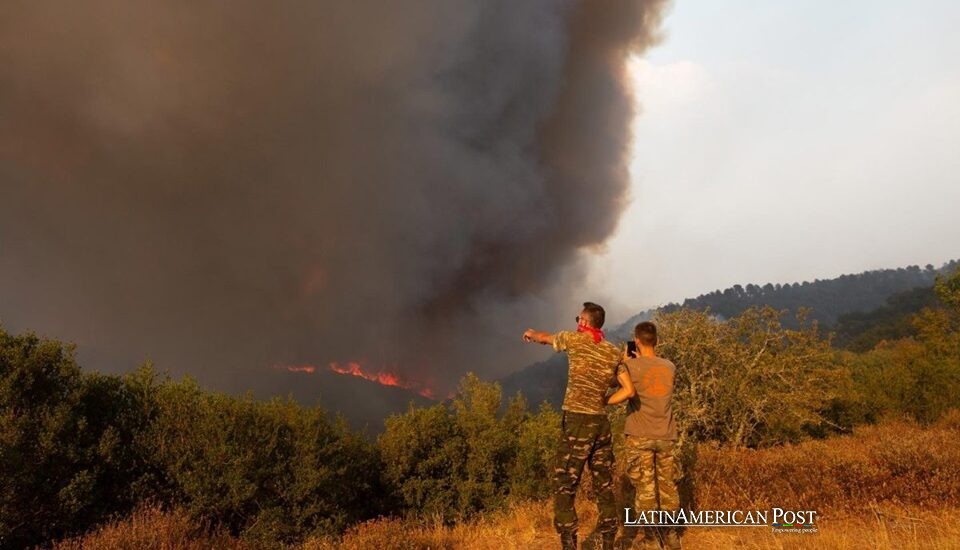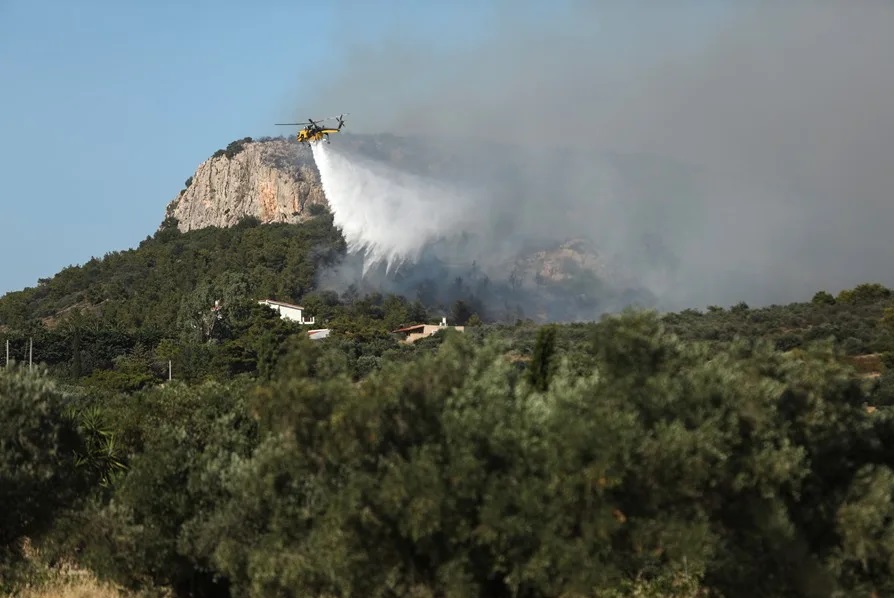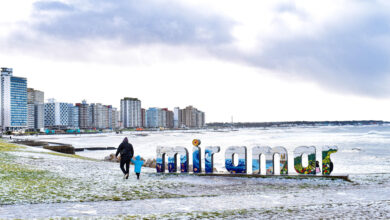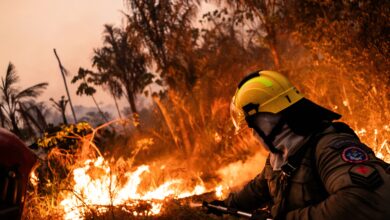The Fire Consuming Europe: A Warning for Latin America

As Greece faces one of its worst summer seasons due to uncontrolled wildfires, Latin America watches closely. The flames ravaging Crete and the outskirts of Athens are not just a local crisis—they’re a mirror of the climate future that could hit our region just as hard, if not worse.
An Island in Flames: The Crete Crisis
The Greek island of Crete has endured days of hell. A wildfire broke out in the island’s eastern region, rapidly destroying more than 1,500 hectares of land and forcing the evacuation of over 5,000 people, many of them tourists. A deadly combination of dry vegetation, high temperatures, and strong winds turned the emergency into a race against time. Hotels, homes, and agricultural fields were trapped in the fire’s path.
The state responded on a massive scale: over 230 firefighters, supported by dozens of water trucks, helicopters, and planes, fought to contain the blaze. Despite their efforts, the fire remained active for at least three days—an indication of its scale. With help from volunteers and local forces, authorities managed to avoid fatalities, but the material losses are substantial.
This episode is another clear sign of how climate change is accelerating and worsening natural disasters. Europe’s wildfire season, which traditionally began in mid-summer, now starts as early as June. Extreme conditions are no longer the exception—they’re the new normal. For Crete, a tourism-dependent island, the impact is both environmental and economic.
Athens Under Threat: Fires Near the Capital
While the fires in Crete were beginning to be brought under control, another blaze broke out near Greece’s capital. In coastal areas of Attica, such as Galazia Aktí and Althea, a fast-moving wildfire forced the evacuation of at least 800 people. Just 30 kilometers from downtown Athens, the emergency raised the alarm of a potential metropolitan catastrophe. Firefighters deployed over 120 personnel and aerial units to stop the fire’s spread.
The proximity to urban zones made the operation extremely high-risk. Flames reached patios and gardens of residences, but thanks to swift action, there were no fatalities or significant structural damage. The Minister for Civil Protection praised the country’s preparedness and rapid response, though he admitted the situation could have spun out of control within hours.
This pattern—simultaneous fires across multiple regions—is now common in countries under high climate stress. Though the context is European, the parallels with Latin America are striking: rising temperatures, intense winds, and flammable debris in poorly planned rural or urban zones.
The fire’s closeness to Athens also prompts debate about urban resilience in the face of extreme weather. How prepared are Latin American cities for a similar scenario? From Santiago to Quito or Mexico City, the risk of peri-urban wildfires is real and increasing.
Extreme Weather: A Perfect Storm
The wildfires in Greece are no accident. Temperatures have soared above 40°C in many parts of the country, while winds—classified as level 9 on the Beaufort scale—have acted as natural accelerants. Prolonged drought and frequent heatwaves are creating the perfect storm for any spark to turn into disaster.
Climate experts note that global warming not only increases the intensity of these events but also makes them harder to predict. Dry seasons are lasting longer, leaving little time for ecosystems to regenerate or for authorities to prepare firefighting infrastructure. The absence of preventive policies further amplifies vulnerability.
For Latin America, this trend is alarming. Countries like Bolivia, Brazil, Argentina, and Chile have already experienced increasingly intense heatwaves. In 2023 and 2024, record temperatures were recorded, and hundreds of thousands of hectares were consumed by wildfires. What is happening in Greece today could happen tomorrow in the Amazon, the Gran Chaco, or the Sierra Madre.
Moreover, extreme weather doesn’t only affect the environment—it impacts public health, food security, and economic stability. The link between climate and poverty is clearer than ever, as the most vulnerable populations have the fewest resources to adapt or escape the flames.
Lessons from Greece for Latin America
The Greek experience offers valuable lessons for Latin American nations. First, early and organized evacuation was key to avoiding casualties. Coordinated efforts between local authorities, civil protection, and armed forces allowed for a rapid response across multiple fronts—something that remains a logistical challenge in much of Latin America.
Second, investment in technology—such as firefighting aircraft, drones, and early warning systems—proved essential. Many Latin American regions lack such resources or use them reactively, not preventively. The creation of regional climate monitoring and risk management centers would be an effective step toward improving disaster response.
Third, environmental education needs urgent reinforcement. Most forest fires are caused by human negligence: poorly extinguished campfires, uncontrolled agricultural burning, or discarded flammable waste. Building a culture of prevention is as important as investing in water trucks or helicopters.
Lastly, Greece shows us that no place is immune. It’s not just traditionally dry or fire-prone regions that are at risk. Flames can now reach coastal areas, tourist zones, and even cities—forcing a reevaluation of land-use planning and risk governance.

EFE@George Vitsaras
Preparing for the Inevitable
The fires in Greece are not isolated events—they are part of a growing global climate crisis. And Latin America, with its immense biodiversity and socio-economic vulnerability, has much to lose. Public policy must act preemptively: strengthening forest brigades, fostering regional cooperation, investing in resilient infrastructure, and accepting that fire is no longer an exception—it’s part of a new reality.
This also requires a critical look at development models. Urban sprawl, deforestation, and intensive agribusiness increase fire risks. Without structural changes, technical advances won’t be enough. Sustainability must stop being a buzzword and become the backbone of political and economic decision-making.
On the international front, Latin America can learn from Europe’s cooperation model. Solidarity between Mediterranean countries, resource sharing, and technical exchanges are replicable approaches. From Mercosur to the Andean Community, disaster prevention and response should be shared regional priorities.
Also Read: In Ecuador’s Rainforest, Women Gather to Defend the Amazon With Law—and Sisterhood
Ultimately, the fire devastating Crete and approaching Athens is a burning warning for the entire planet. Greece is facing a visible crisis, but the smoke from this tragedy should cloud Latin America’s complacency. Preparation, adaptation, and action are the only ways to avoid being trapped between the flames of negligence and global warming.




